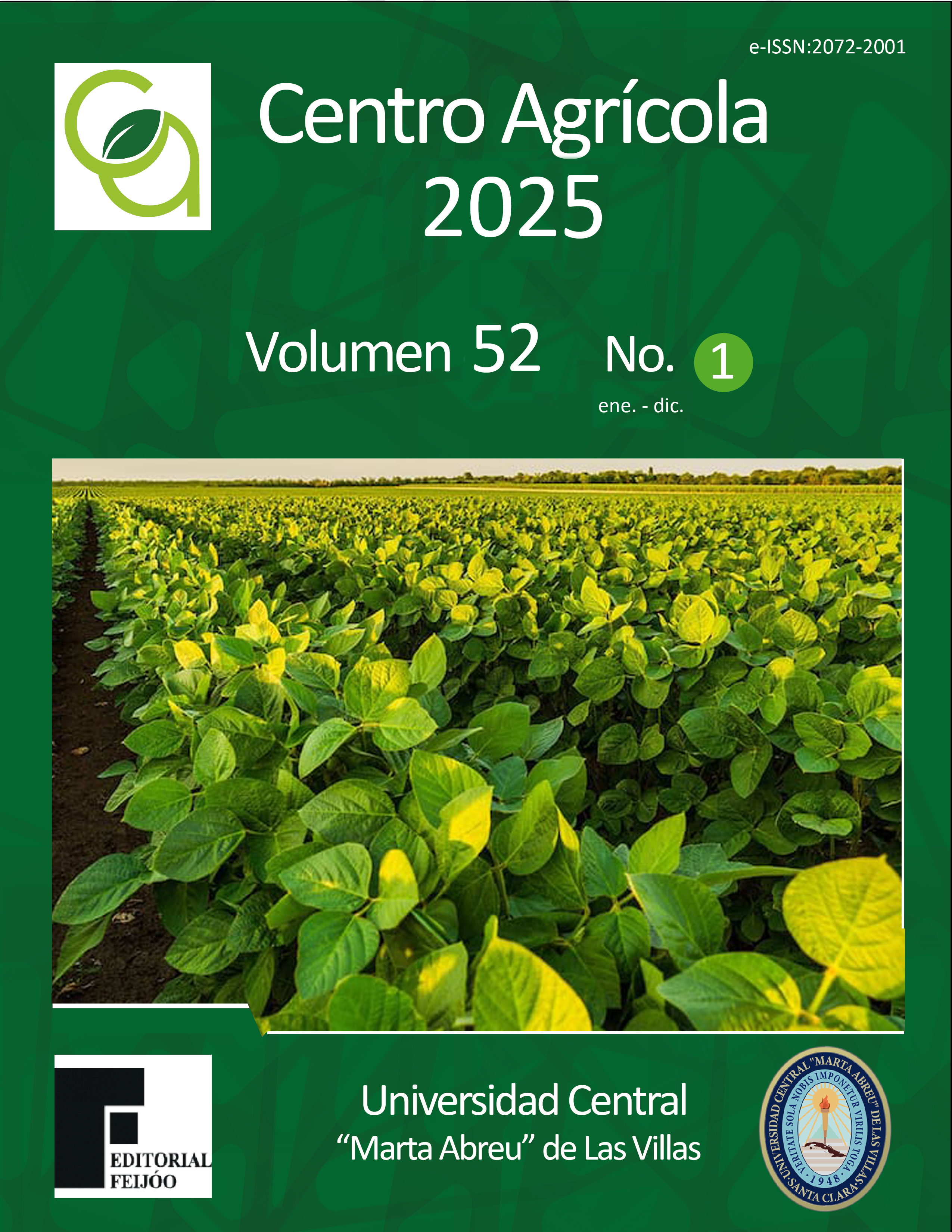CF: cag081242426
ARTÍCULO DE INVESTIGACIÓN
Especies de trips asociadas al cultivo del frijol común en la provincia de Villa Clara
Associated thrips species in common bean crop in Villa Clara province
Silvio de Jesús Martinez Medina1*
Nerelys Alminda Robaina Gómez2
Angel Pérez de Alejo Navarro2
Zaira Liz Pérez Machado2
María Caridad González Díaz3
Victor Daniel Gil Díaz1
Orlando Miguel Saucedo Castillo1
1 Centro de Investigaciones Agropecuarias, Facultad de Ciencias Agropecuarias, Universidad Central “Marta Abreu” de Las Villas, carretera a Camajuaní km 5,5. Santa Clara 54830, Cuba
2 Laboratorio Provincial de Sanidad Vegetal, Ministerio de la Agricultura, carretera a Maleza km 1,5, Santa Clara 50100, Cuba
3 Delegación Municipal del Ministerio de la Agricultura de Camajuaní, calle Juaquín Paneca 72 entre Leoncio Vidal y Raúl Torres, Camajuaní 52500, Cuba
*Correspondencia: Esta dirección de correo electrónico está protegida contra spambots. Usted necesita tener Javascript activado para poder verla.
RESUMEN
Contexto: Existe la posibilidad de coexistencia de especies trips en el cultivo del frijol común en diferentes condiciones climáticas y características de los agroecosistemas.
Objetivos: Identificar las especies de trips asociadas en el cultivo del frijol común en la provincia de Villa Clara.
Métodos: La investigación se realizó en el Laboratorio Provincial de Sanidad Vegetal de la provincia de Villa Clara. Los insectos se colectaron por especialistas y técnicos de las Estaciones Territoriales de Protección de Plantas y fueron diagnosticadas en el referido laboratorio durante tres campañas en plantas con sintomatología de daños. Se analizaron los modelos primarios que contenían la información de los resultados del diagnóstico. Se analizó el número de muestras con diagnóstico positivo a Megalurotrhips usitatus Bagnal, a otras especies de trips y la cantidad de muestras con resultados negativos. Se identificaron las especies de trips asociadas a M. usitatus en cada campaña de siembra.
Resultados: La mayor cantidad de muestras totales (266) correspondió a la campaña 2019-2020, con diferencias significativas con respecto a las otras dos etapas evaluadas. Durante el periodo evaluado, M. usitatus fue la especie predominante y estuvo asociada a otras 10 especies de trips. Los géneros más representativos que se encontraron los Thrips y Frankliniella.
Conclusiones: La mayor cantidad de muestras positivas con presencia de M. usitatus se presentaron en la campaña de siembra 2019-2020. M. usitatus estuvo asociada a otras especies de trips.
ABSTRACT
Context: There is a possibility of coexistence of thrips species in the common bean crop under different climatic conditions and characteristics of agroecosystems.
Objectives: To identify the thrips species associated with the common bean crop in Villa Clara province.
Methods: The research was carried out at Laboratorio Provincial de Sanidad Vegetal in Villa Clara province. Insects were collected by specialists and technicians from the Territorial Plant Protection Stations and were diagnosed in the mentioned laboratory during three campaigns on plants showing damage symptoms. Primary models containing the diagnostic results were analyzed. The number of samples with a positive diagnosis for Megalurothrips usitatus Bagnal, other thrips species, and the total number of samples with negative results were analyzed. The thrips species associated with M. usitatus were identified in each planting campaign.
Results: The highest number of total samples (266) corresponded to the 2019-2020 campaign, with significant differences compared to the other two evaluated periods. During the assessed period, M. usitatus was the predominant species and was associated with another ten species of thrips. The most representative genera identified were Thrips and Frankliniella.
Conclusions: The highest number of positive samples with the presence of M. usitatus occurred in the 2019-2020 planting campaign. M. usitatus was associated with other species of thrips.


